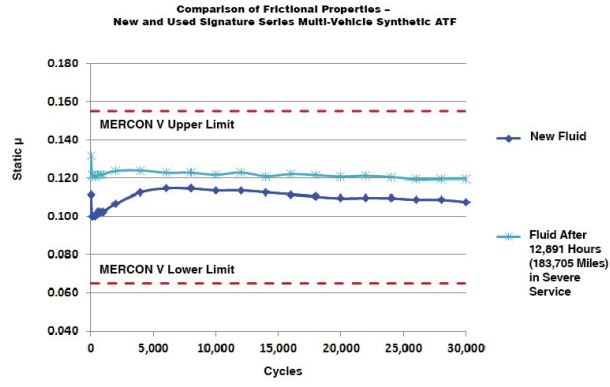Common Fixes for a Transmission that Jerks or Hesitates
Here are a few common reasons why your transmission may shift erratically, jerk or hesitate.
• Low fluid level
• Depleted fluid frictional properties
• Poor cold-temperature fluidity
Start with the easiest fix
There’s an old adage when troubleshooting: start with the least expensive and simplest fix. In this case, check the transmission fluid level first. Low fluid can prevent the transmission from shifting properly. It’s important to find out why the fluid is low and fix any problems. It could be a leaky seal or other mechanical defect. Otherwise, adding new fluid won’t ultimately solve the problem.
Worn fluid equals poor shift quality
Transmission fluid that has aged and lost some of its frictional properties can also lead to poor shift quality. When your vehicle’s computer tells the transmission to shift gears, hydraulic pressure (provided by the fluid) squeezes a series of plates together inside a clutch pack to connect the engine to the transmission output shaft and route power to the wheels. The fluid’s frictional properties play a vital role in ensuring the clutch plates bind together properly and gear shifts occur seamlessly.
Over time, the fluid’s frictional properties can degrade, leading to elongated, jerky or inconsistent shifts. In this case, it’s time for a fluid change.
How do you know for sure the fluid is worn? The only definite way to find out is to conduct used fluid analysis. However, fluid that smells burnt or appears dirty is likely due for a change. It’s best practice to change the fluid before the frictional properties are depleted and you experience poor shifting. Those poor shifts can cause the clutches to wear more rapidly and lead to bigger issues that need mechanical repairs.
Be aware of “adaptive” transmissions
One interesting note affects newer vehicles equipped with adaptive transmissions. These units “learn” your driving habits and the characteristics of the fluid to adjust shifts accordingly. As the fluid loses its frictional properties, the computer compensates and adjusts transmission performance.
If you’ve recently changed your fluid, the computer may still operate as if old fluid is installed, causing poor shift quality. In these cases, keep driving and eventually the computer will “relearn” your driving habits and the behavior of the new fluid and adjust accordingly. The problem was significant enough on some 2012-2013 Ford F-150s to cause Ford to issue a technical service bulletin (TSB 13-1-10).
What do “frictional properties” look like?
We know what good, crisp shifts feel like. Can we dive in even further and see what they look like?
We can, and they appear as a flat, boring line on a graph. The dark blue line represents the frictional properties of new AMSOIL Signature Series Synthetic Automatic Transmission Fluid. The light blue line shows the frictional properties of the same fluid after more than 180,000 miles in taxi cabs operating in the intense heat of Las Vegas.
As you can see, the lines are extremely close, with no abrupt spikes or dips. This means, after 180,000 miles of severe service, the fluid continued to deliver crisp, confident shifts.
Granted, it’s not exciting to look at – unless you love driving and want to protect your transmission.
Cold weather can reduce shift quality
When the temperature drops, transmission fluids with poor cold-flow properties can thicken and cause elongated and hard shifts until the fluid has warmed up enough to flow properly. Switching to a high-quality synthetic transmission fluid will help. Synthetics don’t contain waxes, as conventional fluids do, meaning they remain fluid at lower temperatures for improved shifts during cold weather.
The best transmission fluid available won’t fix a broken transmission. But using high-quality synthetic fluid can help improve shift quality and maximize transmission life.



